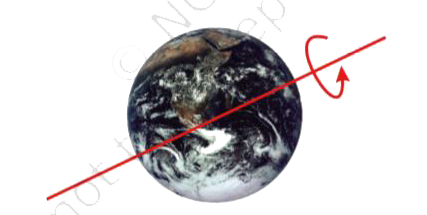Time standards are now based on atomic clocks. A promising second standard is based on pulsars, which are rotating neutron stars (highly compact stars consisting only of neutrons). Some rotate at a rate that is highly stable, sending out a radio beacon that sweeps briefly across Earth once with each rotation, like a lighthouse beacon. Pulsar PSR 1937 + 21 is an example, it rotates once every 1.557 806 448 872 75 ±3 ms, where the trailing ±3 indicates the uncertainty in the last decimal place (it does not mean ±3 ms). (a) How many rotations does PSR 1937 + 21 make in 8.00 days? (b) How much time does the pulsar take to rotate exactly one million times and (c ) what is the associated uncertainty?
Text Solution
(a) 4.44×108 rotations, (b) 1557.80644887275s, (c ) ±3×10−11s
|
Topper's Solved these Questions
- UNITS AND MEASUREMENT BOOK - RESNICK AND HALLIDAYCHAPTER - UNITS AND MEASUREMENT EXERCISE - PRACTICE QUESTIONS (SINGLE CORRECT CHOICE TYPE)
31 Videos
- UNITS AND MEASUREMENT BOOK - RESNICK AND HALLIDAYCHAPTER - UNITS AND MEASUREMENT EXERCISE - PRACTICE QUESTIONS (MORE THAN ONE CORRECT CHOICE TYPE)
6 Videos
- UNITS AND MEASUREMENT BOOK - RESNICK AND HALLIDAYCHAPTER - UNITS AND MEASUREMENT EXERCISE - PRACTICE QUESTIONS (MATRIX-MATCH)
11 Videos
- THE NUCLEUSBOOK - RESNICK AND HALLIDAYCHAPTER - THE NUCLEUSEXERCISE - PRACTICE QUESTIONS(Integer Type)
7 Videos
- VECTORS BOOK - RESNICK AND HALLIDAYCHAPTER - VECTORS EXERCISE - PRACTICE QUESTIONS
39 Videos
Similar Questions
Knowledge Check
A spinning neutron star is known as
AWhite dwarfBBlack holeCPulsarDQuasarAssertion A pulsar is a source of radio waves that varies in intensity at regular intervals
Reason A pulsar is a rotating neutron starABoth Assertion and Reason are true and Reason is the correct explanation of AssertionBBoth Assertion and Reason are true but Reason is not a correct explanation of AssertionCAssertion is true but Reason is falseDAssertion is false but Reason is trueWhich of the following planets rotates clock wise
APlutoBJupiterCVenusDMercury
Assertion A pulsar is a source of radio waves that varies in intensity at regular intervals
Reason A pulsar is a rotating neutron star
View SolutionIn the picture of rotating earth given as Fig. 17.3 mark the position of pole star.

View SolutionQuestions based on kinematics of fixed axis of rotation
View SolutionQuestions based on Instantaneous axis of rotation (IAOR)
View SolutionHow does Earth's rotation affect our view of stars?
View Solution
